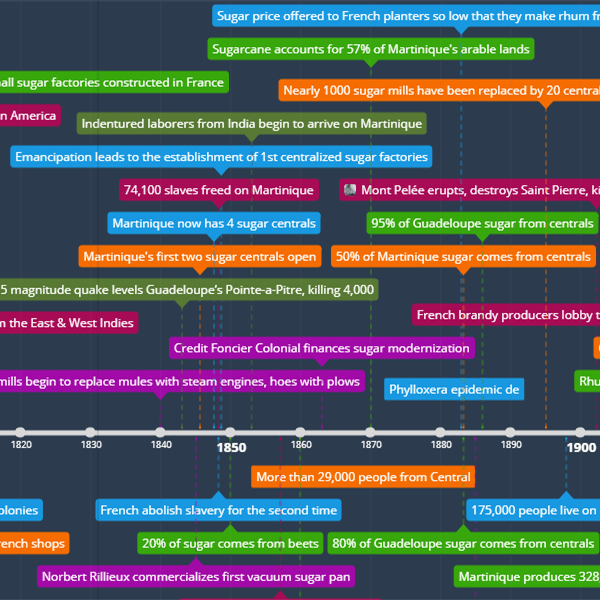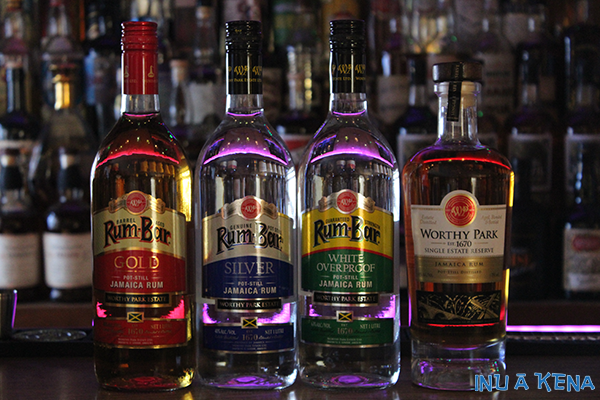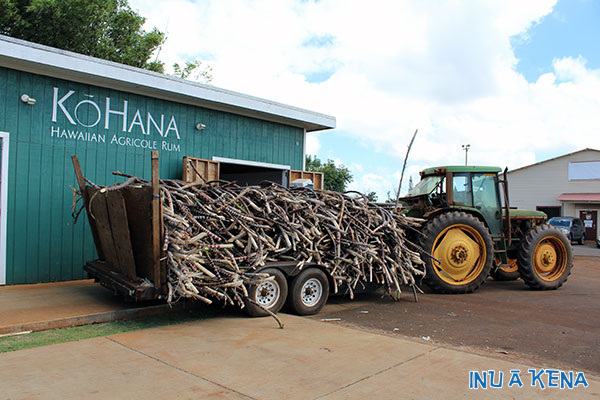New Article: A Visit to River Antoine
Hey folks!
After visiting the amazing Renegade Rum project in Grenada this spring, we took a couple extra days to do a little sightseeing and spend some time at Grand Anse beach. Among the sights we saw was a chocolate estate, a mountain lake, beautiful waterfalls, and monkey-lined trees. Perhaps the biggest highlight among these sights, however, was seeing the River Antoine distillery in Tivoli, home of the famous “Rivers” rum.
Rivers has cult status among serious rum lovers because it’s super rustic, incredibly tasty, and basically not exported. (Needless to say, I drank my fair share while we were on Grenada, and brought a few bottles home for friends.)
Although I’ve been to several Caribbean rum distilleries, nothing could have fully prepared me for the sheer unchanged nature of River Antoine. It’s an amazing sight that everyone should visit at least once.
Check out my recap of the visit here, and scroll through the photo galleries to get a sense of what it’s like. I guarantee you you’ll want to visit by the time you’re done!
Cheers,
Josh

New article: Renegade Rising
Hey folks!
Today I’m happy to share the details of my recent trip to Grenada, where Mark Reynier and his team are building a brand new distillery to make terroir-driven cane juice rum. To call this project ambitious would be the understatement of a lifetime. Having spent three years securing land leases and growing cane before breaking ground on the distillery, the project is finally nearing completion. I wanted to get down there and get a sense of how Grenadians were feeling about the project as it took shape, and I’m really glad I did. It’s probably the most exciting story in rum right now, so you’ll want to stay informed. Have a read and let me know what you think.
Cheers,
Josh
Fake Rum Unmasked
Spend a while researching rum and you’ll find out there’s an open secret among rum professionals: many popular rums on the market contain non-rum additives. The most famous additive is of course sugar, and folks armed with hydrometers and alcohol meters have created a fairly large database of rums proven to contain added sugar.
Look a little deeper, however, and you’ll learn many rum producers are also adding ingredients that are more difficult to detect. Give an adulterated rum to a rum expert, and most will immediately recognize the presence of exogenous ingredients, but how do we flatten the learning curve for those still learning about the shadowy side of rum blending?
It’s difficult to prove the presence of additives without extensive lab analyses, so rather than spending thousands on lab fees to definitively out a bunch of suspect rums, I decided to approach the issue in reverse: I would make my own fake rum to show how it’s done.
Read the article here to learn about my blender’s toolkit and see how my fake rums actually tasted. And for the real gluttons for punishment among you, stick around as I attempt to unpack the U.S. government’s regulations on rum additives.
Cheers,
Josh
The Curious Case of Saint Benevolence
Right after I finished a ton of research on Haiti for my article on the US introduction of clairin, I noticed an invite to an event showcasing a new rum benefiting Haitian charities. Cool, I thought—another cane juice rum from Haiti! Not so fast. This rum was actually a blend of rums from elsewhere in the Caribbean. Wait, what?
I went to the event anyway because it was a mile from my house and I’m very glad I did, because without speaking to one of the founders, I would still be a bit lost. The good news? It’s totally legit, and 100% of the profits really do go to Haiti. Read on…
I’ve gone down a real Haitian history wormhole lately. After reading Empire’s Crossroads (highly recommended) I had to learn more about Haiti, so I picked up Haiti: The Tumultuous History – From Pearl of the Caribbean to Broken Nation (full of opinion and borderline racism), then I read Haiti: The Aftershocks of History, which was fantastic. Moving into the post-earthquake era, I read The Big Truck That Went By: How the World Came to Save Haiti and Left Behind a Disaster and am currently reading a Mountains Beyond Mountains, a biography of Paul Farmer, an American doctor who runs a community health system in Haiti’s central plateau.
In addition to Haiti’s history, I have become fascinated with the country’s preferred spirit: clairin. Heretofore, the only Haitian liquor export we saw in the US was Rhum Barbancourt–a fine product to be sure, but a far different type of beverage entirely.
In a country where the average person lives on the equivalent of two dollars a day, Rhum Barbancourt is for most an unimaginable luxury. Clairin on the other hand, is relatively affordable and readily available from the country’s 530+ distillers, most often sold from large jugs into a receptacle you yourself bring to the point-of-sale.
Clairin is made from fresh-pressed sugar cane juice (and sometimes from cane syrup) but it is quite different from French-style rhum agricole. More rustic and flavorful, the wild fermentations take much longer, and the distillations are to proof. Now thanks to La Maison & Velier, we in the states can buy clairins from three different Haitian distilleries–each amazing in its own way.
Want to find out more? Read the article here or click the image below.
Cheers,
Josh
New Article: How Does Water Quality Affect Rum Production?
Hey folks,
You’re in for a bit of a nerdy treat with my latest article (I hope). As some of you know, while rum is my undying passion, the bulk of my professional career has been spent in the industrial water treatment industry. Today I marry those two topics for the first time to find out how water impacts the rum we drink. Whisky folks talk about their water pretty regularly, but rum makers rarely touch on it. Why is that? The answers you seek are here.
Cheers,
Josh
Inu Ā Kena: Six Years On
Seriously, where does the time go?
On Blogging
If inuakena.com were a child, it would be a first grader. It really puts time in perspective when I think of it that way. Continuing the analogy, it would be fair (and sad) to say most rum blogs die in infancy. It’s hard to toil in obscurity while you build an audience—especially with all the pressure of a day job, family, etc. I found this out early on, and fortunately was encouraged by other writers to stick it out (and I’m still grateful).
Nowadays, new spirit and cocktail writers are essentially “blogging” on other platforms such as Instagram and Facebook. Those are great, but I hope that’s not the only future. I don’t want to read an article-length piece on Instagram—sorry, the text is just too small, and I want to be able to stop in the middle and come back to it later. Nice photos, though!
The great thing about web sites is that they are evergreen. Some of the articles I wrote years ago still get boatloads of traffic. People find these and interact with them as if they are new, which provides a continual stream of joy for me.
You have likely noticed I don’t write nearly as often as I used to, but I like to think the few articles I write are of interest to other rummies. The long-form stuff like my piece on the history of French Caribbean rum is way more fun and interesting to work on than another review of a dodgy rum, but it’s much harder to come up with those ideas than it is to take a sample from a PR firm or buy something at the store. That said, I’ll still be reviewing new rums and cane spirits that are of interest to me and my readers. (Distillery visits are still my favorite things to write about, however, such as this summer’s visit to Manulele Distillers.)
On Rum
So what about the state of rum? I would say it hasn’t been this strong in decades. You may read that rum case volumes are dropping, but that’s not a bad thing from where I sit, as the losses are all at the bottom end of the market. The biggest growth is happening in the “super premium” category, and many of them are actually deserving of the title.
Why super premium? There are three main drivers:
- Growing familiarity with and appreciation of brown spirits
- What Sex and the City did for Cosmos, Mad Men did for brown liquor in a glass. Rum is a brown liquor that many find more palatable than whisk(e)y, Bob’s your uncle.
- Tiki 2.0
- Tiki is huge right now, and where there is no tiki bar, there is at least a tiki night at a non-tiki bar. Nothing drives rum depletions like tiki drinks, so that is a big deal. (All of these folks should be sending royalty checks to Jeff Berry, BTW).
- The lack of fun in American whiskey
- Fantastic deals on long-aged, high quality Bourbon and rye were once omnipresent, but those days are gone, and now your everyday dram has probably become unobtanium (for me it was Weller 12). This bummer of a market condition has pushed some Bourbon folks more into Scotch whisky, but it has also pushed many into the tippy top end of the rum market.
So what’s next for rum in the US? In short: more.
- More indie bottles and blends
- Independent bottlings of cask-strength Caribbean rum are generating the most excitement right now. Expect to see more of these, as well as more “full strength” releases direct from the distilleries. The number of blended products from Amsterdam will also continue to rise, but will they differentiate themselves enough to prove successful over the long term?
- With Velier setting up shop in New York City, we should finally be seeing some of the goodies the Europeans have been enjoying for years. Having bought more than a few bottles online from England and France, I am personally very stoked about this.
- More cane juice rums
- Cane juice rums from the United States are catching on, and I for one am excited about it. Beginning with St. George here in California and KoHana on Oahu, we are now seeing new cane juice rums from the American Southeast and Louisiana.
- Cane juice rums from Mexico are hitting the states now, beginning with Puerto Angel, and continuing with Paranubes (from the folks who brought you Mezcal Vago). The scarcity of agave will continue to drive the agua de caña business forward.
- Velier’s entry into the American market also means we get Clairin! Look for this category to open up as people discover the wonders of Haiti’s spirits beyond the venerable Barbancourt.
- More flavorful white rums
- The burgeoning success of Hampden Estate’s Rum Fire proves some people actually like congeners in their white rums. Expect to see more flavorful white rums from small mainland distilleries (Roulaison comes to mind) as well as blends from Amsterdam and elsewhere.
- More transparency
- The days of decrying anti-additive crusaders as sticks in the mud (or worse) are over. People want to know what’s in the rum they drink, and producers are slowly responding in kind. Transparency is one of the key reasons independent rum bottlers and brutally honest rum makers like Richard Seale of Foursquare are doing so well, thus proving there is tangible value in transparency.
Onward
Like many of you, I’m incredibly passionate about rum, and I still hope to make it my living one day. I mean hey, if you know of any opportunities, send them my way…
Until then, you can find me here occasionally and on social media frequently. If you don’t follow @inuakena on Facebook, Twitter and Instagram, please do! You’ll be kept up-to-date on all things rum and have all the crummy content filtered out before it hits your screen.
Thanks again for reading, and for your sustaining support. You rule.
Cheers,
Josh
New Article on the History of French Colonial Rum Production
Hey folks,
Have you ever wondered why French Caribbean producers make rum from cane juice rather than molasses? Me too. I mean I’d heard and read various accounts of the motivations for the switch, but the more I dug into it, the more clear it became that the answer was far more multifaceted than I’d been led to believe.
So for the past couple of weeks, I’ve dug into my rum resource books and scoured the Web for information and compiled it all for myself. First in this massive 400 year timeline of events that shaped the French Caribbean rum industry, and today in a 2,100 word article. It’s a big departure form my normal writing, but I hope you enjoy it. Read the article here.
Cheers,
Josh

Aloha!
Today we’re back from summer break with another distillery visit recap. On our recent family vacation to the Big Island of Hawaii, we had occasion to pop over to Oahu for the day , so I made sure to visit Manulele Distillers, makers of the delicious Kohana rum–an agricole style rum made from the fresh juice of several different Hawaiian heirloom cane varieties. The whole family came along which was great fun, and the aloha from Manulele was boundless.
Click here to read the article and see how Kohana rum goes from glass to glass!
Cheers,
Josh






